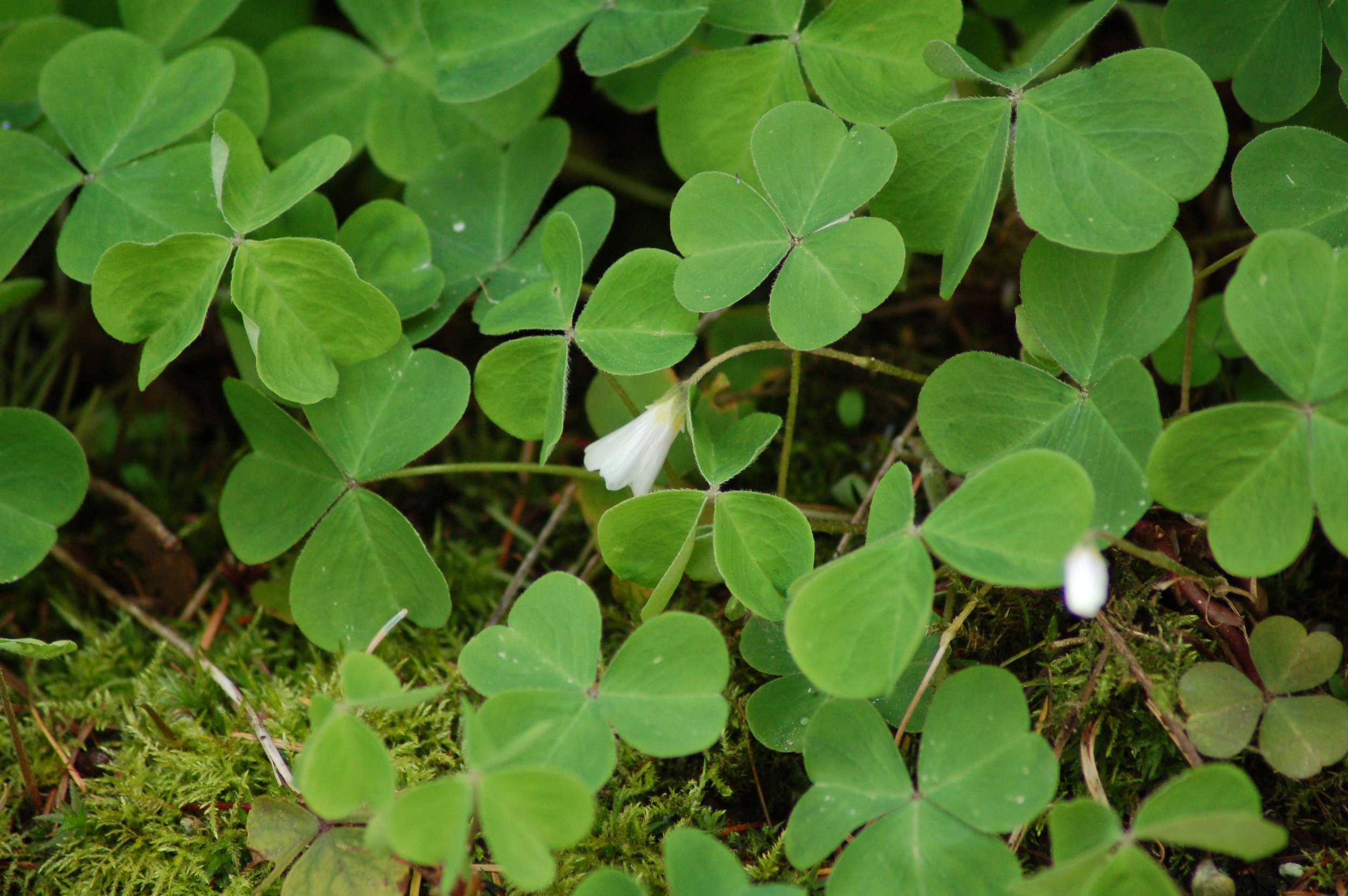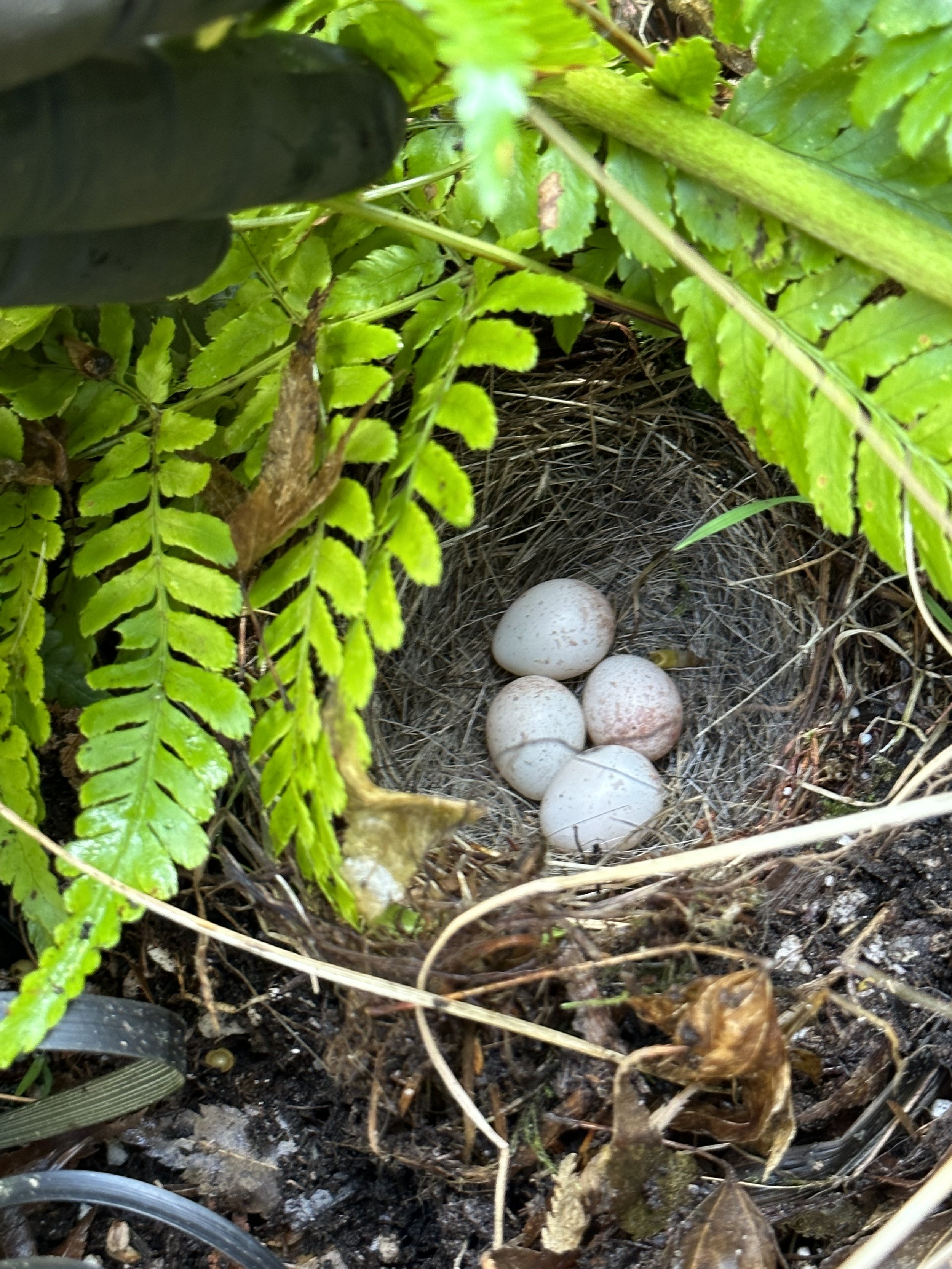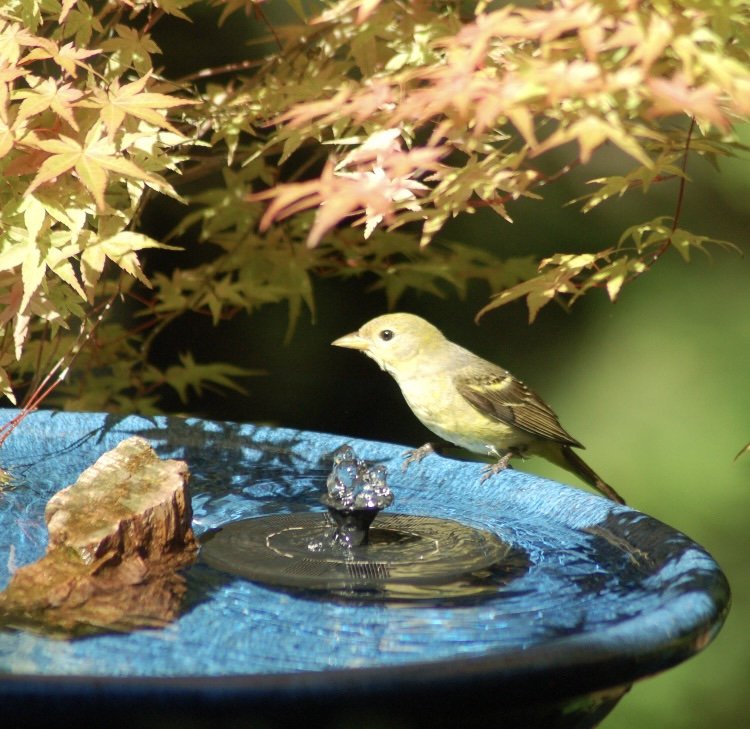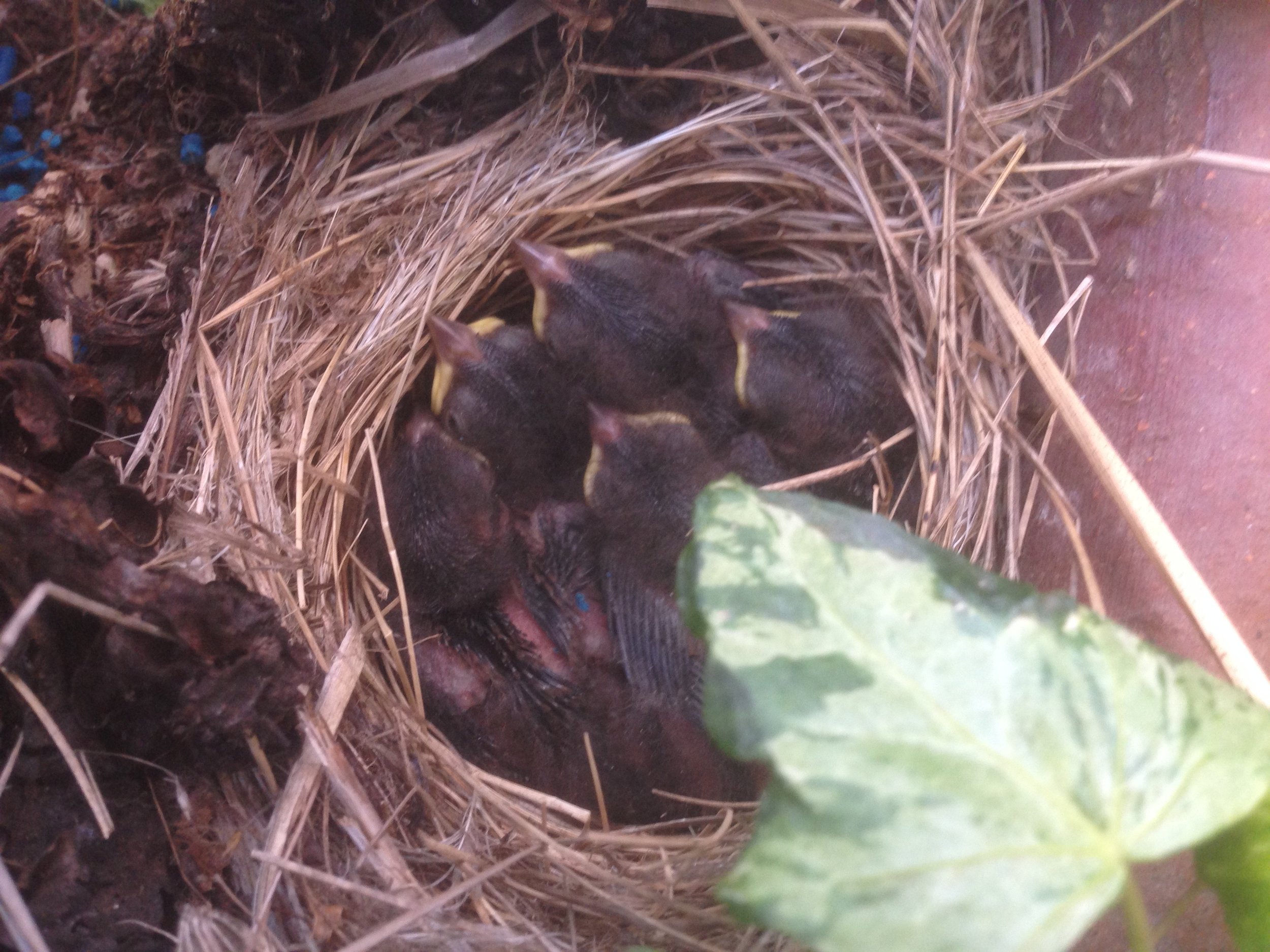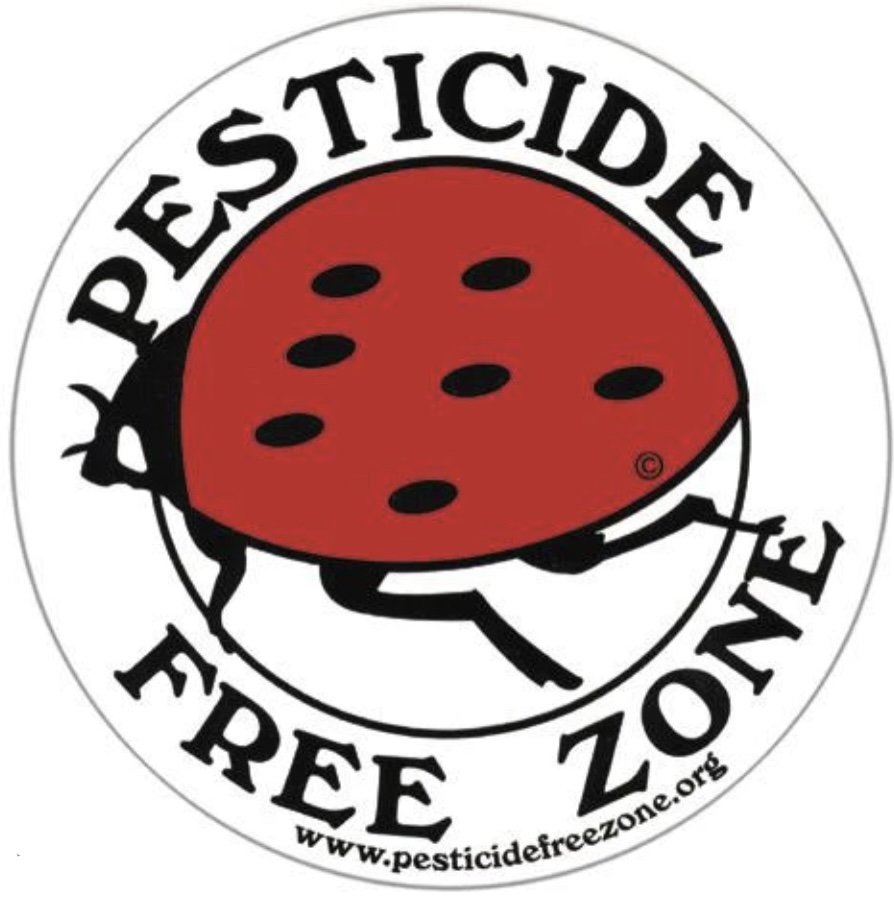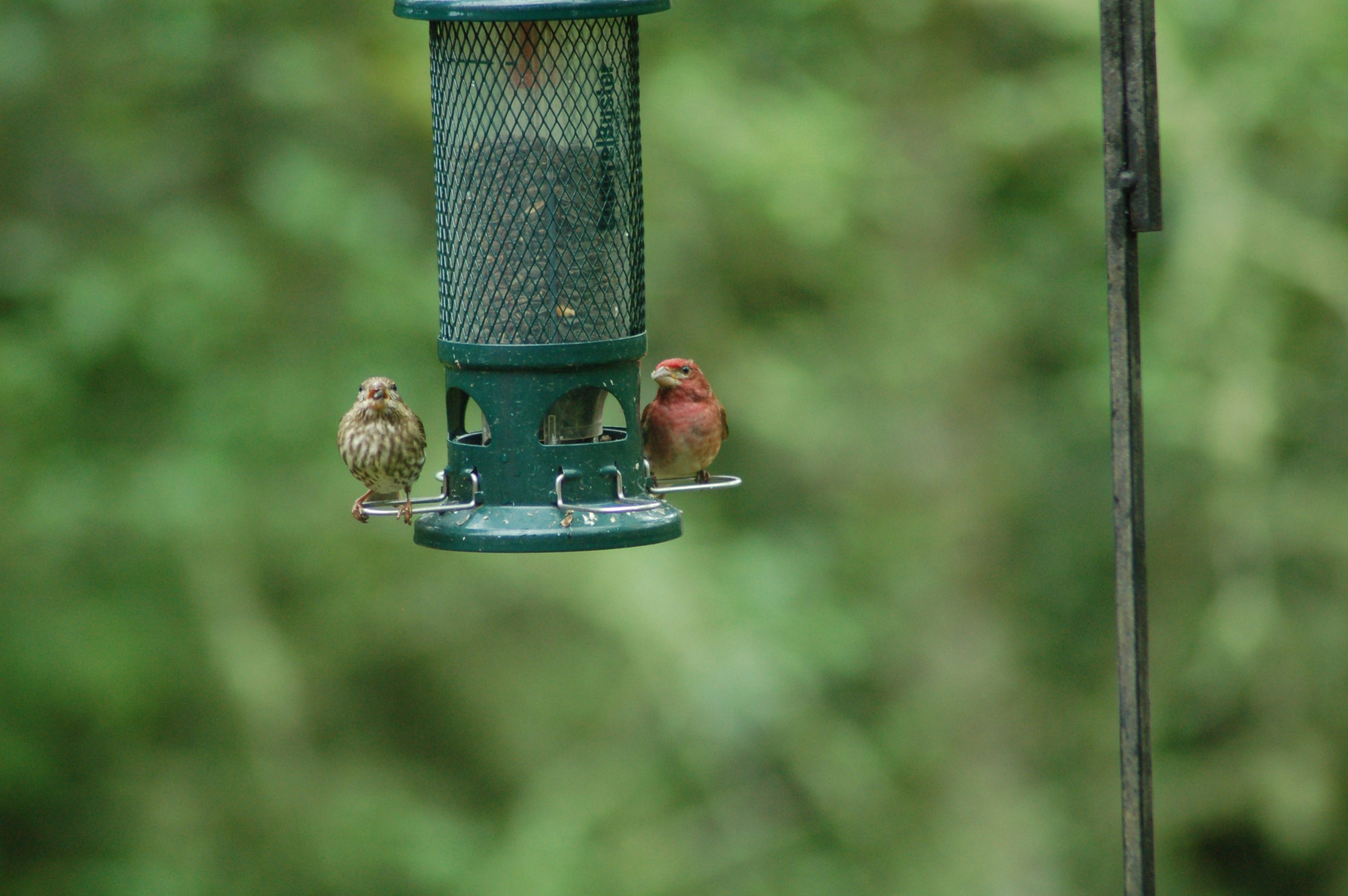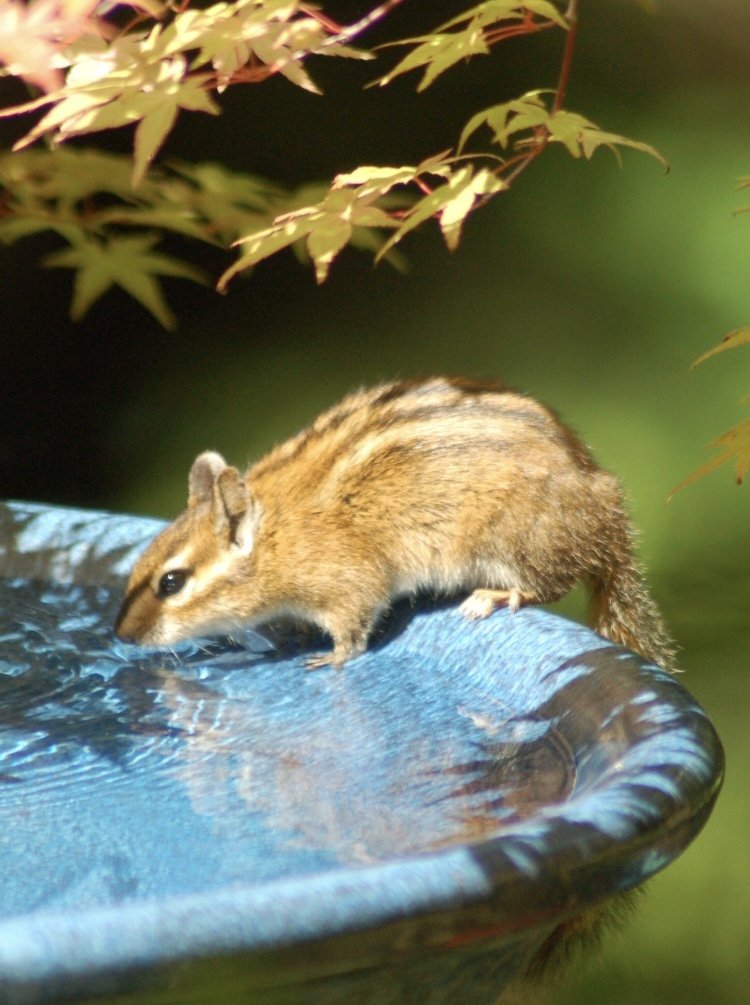I am obsessed with making lists! Here are my tips for creating a welcoming habitat to encourage native creatures to your garden:
1. Plant native plants: Native plants are adapted to the local climate and provide food and shelter for local wildlife and birds.
2. Install bird feeders and birdbaths: Providing a source of food and water will attract a variety of bird species to your garden.
You can purchase or make your own suet or seed mixes; I have found the Tanagers and finches love sunflower and thistle seeds.
If you choose to feed your local birds, please pay close attention to cleaning their feeders and stop providing food immediately if you see any signs of illness.
Simply having a birdbath with fresh water will draw many birds without needing to put out bird feeders, however, the most colorful birds tend to go after the suet cakes and fresh fruit.
Always be sure you provide fresh, clean water. The more creatures you attract, the more often you’ll need to dump, wipe down, and clean the birdbath.
Hummingbird feeders are an easy way to attract many hummers. To make your own EASY nectar, stir 4 parts water to 1 part sugar. No need to boil according to Audubon, the priority should be cleaning and maintaining the feeders.
3. Create a habitat: Provide shelter for wildlife by planting shrubs and trees, installing birdhouses and bat boxes, and leaving piles of leaves and branches for small animals to hide in.
4. Provide nesting sites: Install birdhouses and nesting boxes for different bird species. Research the specific needs of each species to ensure the proper placement and design of the houses.
5. Avoid pesticides: Chemical pesticides can harm wildlife and birds. Try natural alternatives like companion planting, using insect-repelling plants, and handpicking pests. If you have a question, don’t hesitate to shoot me an e-mail, I’d love to provide some alternative solutions.
6. Always remember to maintain a clean environment: Keep feeders, birdbaths, and your garden clean and free of too much debris to prevent the spread of disease and attract undesirable wildlife.
7. I’ll never tire suggesting this tip- Educate yourself: Learn about the local wildlife and their needs. Grab an identification book, join a local birdwatching club, visit your local nursery and as a Certified Professional Horticulturist. The more you learn, you’ll find it easy to make informed choices about your gardening practices and attract even more wildlife to your garden.
Until next time,
Alison



